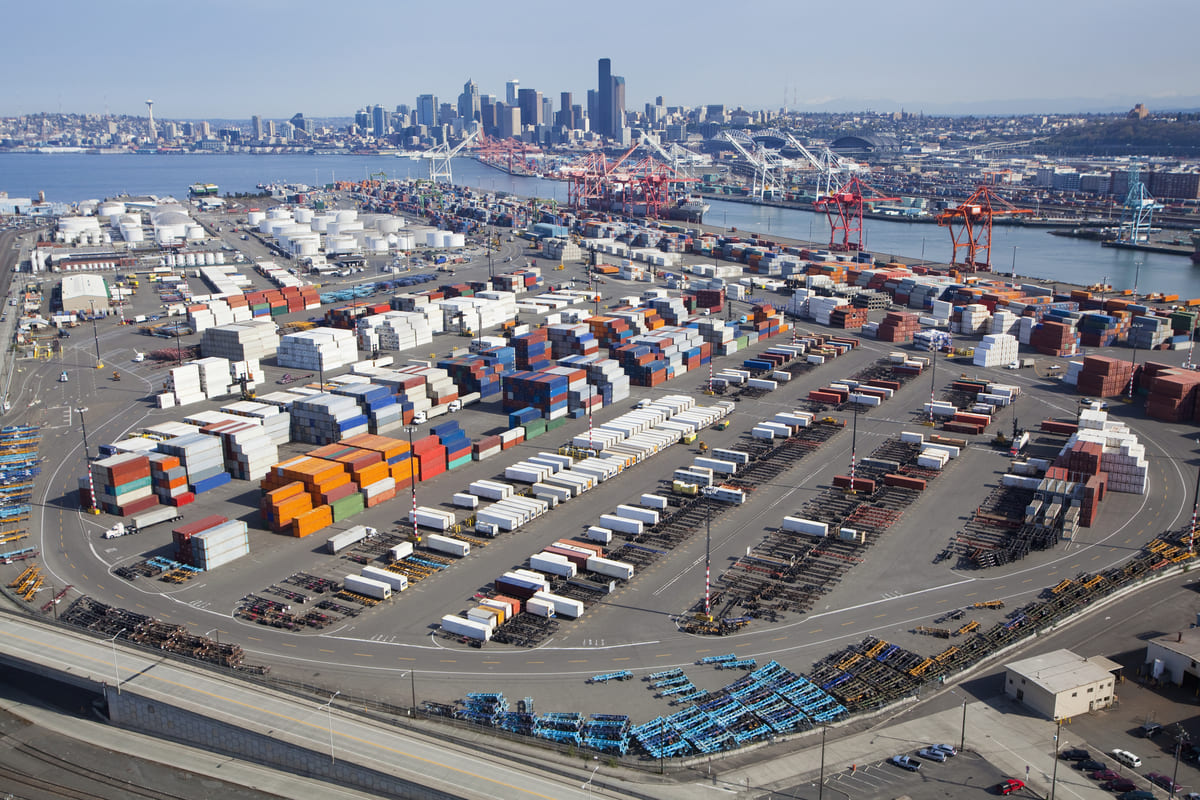A new labor agreement signals peace on the docks, but broader shifts in supply chains are roiling trade
West Coast ports have a new labor agreement in hand but they face big hurdles in their efforts to get U.S. importers to bring their supply chains fully back through the gateways.
New manufacturing strategies along with geopolitical tensions and China’s lagging economic growth are casting clouds over the ports that have long been a linchpin of the U.S. trade economy, even as the gateways from Southern California to Seattle trumpet an end to the labor uncertainty that helped push millions of import containers to other ports.
“A lot of [importers] have found benefits with East Coast and Gulf Coast ports,” said Jonathan Gold, vice president for supply chain at the National Retail Federation.

The Port of Seattle is one of several West Coast ports that have seen import trade drift away under labor uncertainty. Diagram of the port of Seattle
Gold said Gulf Coast and East Coast ports are gaining trade as retailers look to spread out their supply chains to be less reliant on one gateway. He said importers also like the proximity to growing manufacturing and population centers, especially in the Southeast, where retailers are investing in new facilities.
Members of the International Longshore and Warehouse Union last week ratified a six-year contract covering dockworkers at West Coast ports, ending more than a year of uncertainty that led some importers and exporters to shift some business away from potential disruptions.
The West Coast is still the preferred gateway for many importers bringing in toys, clothes, furniture and televisions from factories in Asia because it provides the quickest ocean route from factory to port. An extensive network of warehouses, trucks and railroad operations fans out from the ports to spread goods across the country.
But the region has been losing share slowly to other parts of the U.S. over the past 20 years.
That shift accelerated during the pandemic because of big containership backups at the ports that caused massive cargo delays. It continued during the past year because of fears of labor disruptions as the dockworkers’ union negotiated a multiyear deal to replace the last contract that expired in July 2022.
The share of all U.S. containerized import cargo handled by West Coast ports fell in June to a combined 35% as measured by weight, according to the Pacific Merchant Shipping Association, down from 37% in June last year.
The ports of Los Angeles and Long Beach, which together form the largest single gateway complex for U.S. container imports, saw inbound volumes fall by nearly a quarter in the first six months of this year compared with the same period in 2022, according to PMSA figures. The ports of Savannah, Ga., and Charleston, S.C., the closest points to a burgeoning network of electric-vehicle and battery factories in the Southeast, reported far slimmer declines.
Gene Seroka, executive director at the Port of Los Angeles, said in July he attributes about 15% of the lost cargo volumes to the diversion of trade to alternate gateways, and that experience suggests some percentage of that lost trade won’t return.
“It will be an uphill climb,” Seroka said. “Our job now is to be absolutely relentless in going after every pound of freight possible.”
“Our job now is to be absolutely relentless in going after every pound of freight possible.”
— Gene Seroka, executive director at the Port of Los Angeles
Logistics property developer Prologis, in a report being released this week, estimates that over the next six to 12 months the combined Los Angeles-Long Beach port complex might regain only half of the cargo volumes lost to diversions.
That is in part because of long-term supply chain shifts, as retailers and manufacturers move goods production away from China to countries such as India that connect more easily to East Coast ports as well as to Mexico.
Meanwhile, growing production of electric vehicles and batteries for those cars is focused mostly on southeastern U.S. states, a potential boon for ports like Savannah and Charleston as manufacturers bring in parts for their factories.
✪ By Paul Berger , Sept. 4, 2023 8:00 am ET
Appeared in the September 5, 2023, print edition as ‘West Coast Ports Try to Woo Back Imports’.
View Original Article